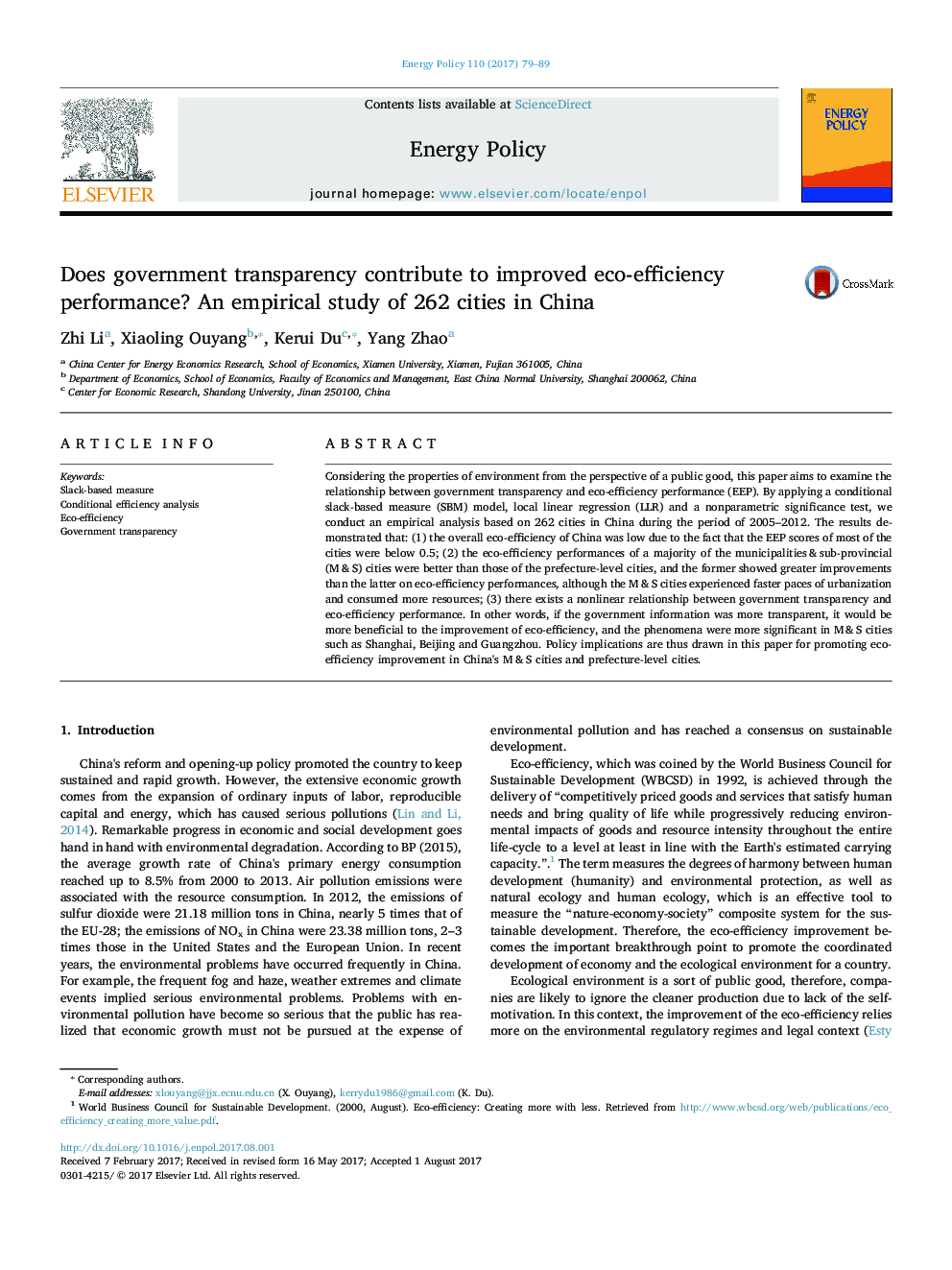| Article ID | Journal | Published Year | Pages | File Type |
|---|---|---|---|---|
| 5105571 | Energy Policy | 2017 | 11 Pages |
Abstract
Considering the properties of environment from the perspective of a public good, this paper aims to examine the relationship between government transparency and eco-efficiency performance (EEP). By applying a conditional slack-based measure (SBM) model, local linear regression (LLR) and a nonparametric significance test, we conduct an empirical analysis based on 262 cities in China during the period of 2005-2012. The results demonstrated that: (1) the overall eco-efficiency of China was low due to the fact that the EEP scores of most of the cities were below 0.5; (2) the eco-efficiency performances of a majority of the municipalities & sub-provincial (M&S) cities were better than those of the prefecture-level cities, and the former showed greater improvements than the latter on eco-efficiency performances, although the M&S cities experienced faster paces of urbanization and consumed more resources; (3) there exists a nonlinear relationship between government transparency and eco-efficiency performance. In other words, if the government information was more transparent, it would be more beneficial to the improvement of eco-efficiency, and the phenomena were more significant in M&S cities such as Shanghai, Beijing and Guangzhou. Policy implications are thus drawn in this paper for promoting eco-efficiency improvement in China's M&S cities and prefecture-level cities.
Keywords
Related Topics
Physical Sciences and Engineering
Energy
Energy Engineering and Power Technology
Authors
Zhi Li, Xiaoling Ouyang, Kerui Du, Yang Zhao,
